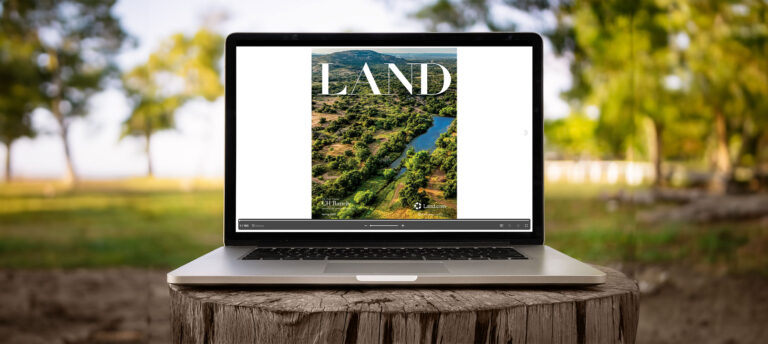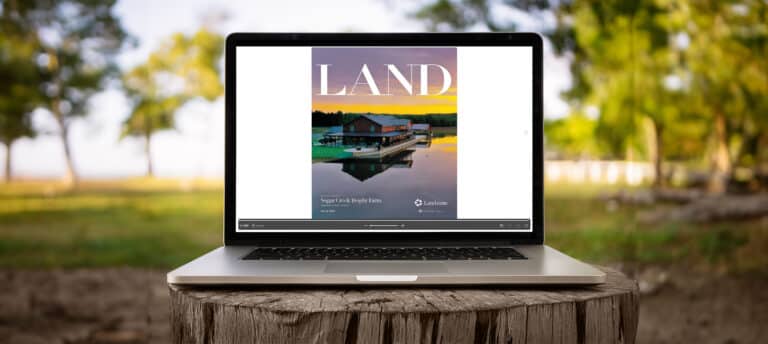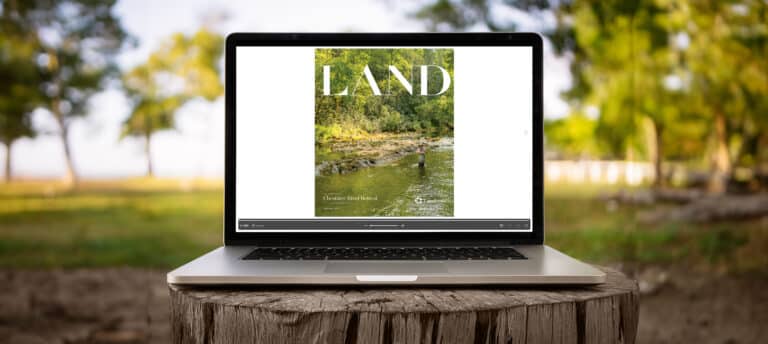Over 50,000 books. A high mountain abandoned ranch. A trout steam. Welcome to the Rocky Mountain Land Library, the first and only library in the U.S. where you’ll be able to go and spend the night. The fantasy-like Wild West setting, nestled on a grassland flat between two mountain ranges in Central Colorado, is a dream come true for husband-and-wife book buyers Ann Marie Martin and Jeff Lee. They always knew they would find a home for their beloved volumes about nature, the environment, history, literature, western land issues, archeology and all things American West.
“You look around and it’s as if the cowboys just left two weeks ago!” says Lee, standing in the horse barn that dates back to the 1800s when it was Buffalo Peaks Ranch, the most successful cattle operation in Colorado and perhaps, the West.
Martin and Lee’s dream began 20 years ago when their employer, Denver’s epic Tattered Cover Book Store, sent them to The London Book Fair.
“Ann had read about St. Deiniol’s Library in Wales, where you could spend the night.” The “bed and book” has over 250,000 books and printed materials. Surreal for any book lover!
After the book fair, Martin and Lee spent a weekend at St. Deiniol’s, now called Gladstone’s Library, and discovered a cross between a library and a dorm. They immediately felt a kinship and familiarity—a place they always imagined, but couldn’t quite articulate. The library was re-named after its founder, former British prime minister William Ewart Gladstone, who shared Martin and Lee’s fierce desire to share his personal book collection and create a place for readers, researchers, nature lovers, artists…anyone.
“We came away from Gladstone with the dream of we want to do the same in the Southern Rockies of Colorado,” says Lee of the volumes they bought using their bookstore salaries and employee discounts.
![Hawarden Castle, British Prime Minister William Ewart Gladstone’s home in North Wales. (ca. 1890) Hawarden Castle. Great Britain Hawarden Hawarden. Wales, ca. 1890. [to 1906] [Photograph] Retrieved from the Library of Congress, https://www.loc.gov/item/2017660934/.](https://network.land.com/wp-content/uploads/2020/07/52875u.jpg)
Gladstone would have been elated with The Rocky Mountain Land Library (RMLL) and the chance to meet fellow book visionaries. In fact, he would have witnessed an uncanny parallel to his own library’s beginning. In the 1800s, with the help of his valet and daughter, Gladstone used his own wheelbarrow to haul 30,000 books a quarter of a mile from his home at Hawarden Castle in North Wales to his new residential library in the countryside. He unpacked and shelved his collection about Victorian history and theology and created his own cataloging system.
Coincidentally, RMLL sits on vast acreage first staked out in the 19th century by French natives Marie and Adolphe Guiraud, who grew oats, wheat, rye, and potatoes. In 2010, Martin and Lee used their Subaru “barrow” to transport bins of their books 90 miles most Saturdays from their Denver home to the new RMLL. They labeled the inside of each book with a handwritten 3-by-5 index card and started organizing them by subject in mini libraries inside the half-dozen structures on the ranch.
The Name and The Search
Lee and Martin smile when asked about the name of their nonprofit library. They realize it’s confusing. But, the quiet, scholarly couple explains it with great ease.
“The books are all about people’s relationships to the land,” says Lee, “to art, to poetry, to religion, to how people make a living on the land, from farming to mining.” He pauses, squints at the intense afternoon sun, adjusts his baseball cap and crosses one jean-clad leg over the other.
“When we realized that was our focus, we realized we need to have that in what we call a land library. We wanted a place where people could enjoy the books and use them for inspiration and practical research and have easy access to what the library is all about—nature and the land.”
The books are all about people’s relationships to the land, to art, to poetry, to religion, to how people make a living on the land, from farming to mining.”
Jeff Lee
Rocky Mountain Land Library Director
Talk to Lee often and he’ll repeat impassionately that they want people to come and “have the opportunity to slow down to the rhythms of nature.” He’s okay with people calling it what they want—a land library or residential, or a retreat—and making it what they want: a place to read, study, research, explore, fish, paint, write, walk, listen. . . .
Lee is quick to dispel a common misperception. It won’t be “one big barn filled with books.” Instead, think of this unique library, especially as it evolves, as more of a tapestry. Lee and his lead volunteer architect, Ted Schultz, call it a “weaving” of books across the 45 acres. So, people can walk along and stumble upon a wooden shelf of books inside a structure or slide a book out of a glass case in an outside nook and sit and read.
It took five years to find the perfect location. Lee and Martin’s idea drummed up excitement whenever they reached out to local historians, preservationists, and other experts.
“Oh, my stars!” shouts Linda Balough at the mention of RMLL. “I thought the concept was just amazing, amazing!” says Balough, who held several positions upon meeting Lee and Martin in 2004, including Park County’s former Director of the Office of Historic Preservation, Tourism, and Community Development.
Balough was 100 percent certain that this area, notorious for the “South Park” cartoon, was the most practical and ideal location for RMLL. It’s the heart of Colorado; it’s “dead center” in the state; it’s one of 55 designated National Heritage Area sites in the U.S. for historic preservation. Balough was the cheerleader that Lee and Martin needed.
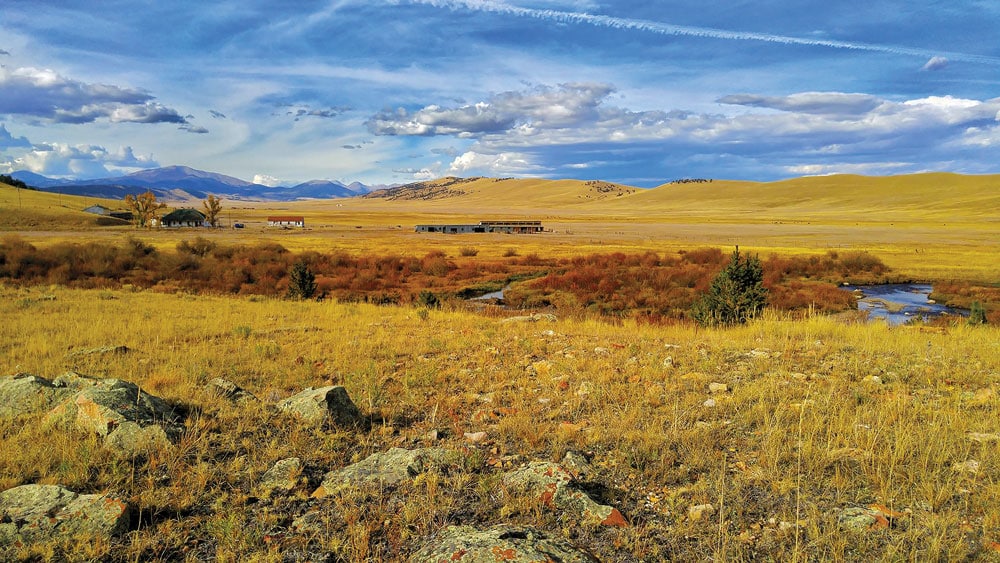
“Buffalo Peaks Ranch had the authenticity of what’s in Park County (historic ranches) juxtapositioned against what a short distance it is from a metropolitan area,” says Balough.
Gradually, they narrowed their search down to two ranches, devoting a lot of time to looking at the historic agricultural Hayden Ranch in Leadville, which has the highest elevation of any city in the U.S. It was well worth it, because one day, Lee happened to meet an architecture professor with roots in rural Colorado, an expertise in preservation, and affinity for challenging her graduate students. Enter the enthusiastic Kat Vlahos, Director of Center of Preservation Research, University of Colorado, Denver. Vlahos, her 12 students, and Lee walked Hayden Ranch over and over “to test” it and try to understand the land and buildings and look at new uses.
After reviewing students’ design proposals and brainstorming, everyone agreed that Hayden Ranch wasn’t a fit. It was missing one key absolute—a cultural landscape. “It had to be the interaction between people and the land or people in place over time,” explains Vlahos. The right fit would be all about “taking an old place and transitioning it to a new use . . . that could take on a new life that drew community to it.”
Their last stop was Buffalo Peaks Ranch, ten miles outside of the historic mining towns of Alma and Fairplay. Everyone saw the perfect combination of landscape and buildings: High mountain grasslands, surrounded by mountains, a river runs through it and structures for mini libraries and people to gather or enjoy solitude.
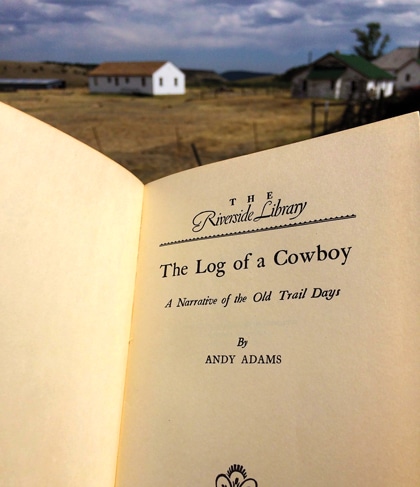
At last, in 2014, RMLL was born! It would occupy 45 acres of the 1,500 acres of a ranch that stayed in the Guiraud family until 1943, then had several owners until Colorado’s City of Aurora bought the former cattle operation in 1985 for its water access. Lee and Martin negotiated and signed a deeply discounted lease for the ranch located across from a now ghost town, Garo, which was founded by Marie Guiraud.
The small white Guiraud home sits closest to the ranch entrance, surrounded by the other structures—the Cook’s House, two Scale Houses that were used to measure and weigh livestock, a horse barn, lambing barns, and a bunkhouse where ranch hands stayed.
“It’s a beautiful weaving of people and place and architecture and land,” says Vlahos, who can still be found volunteering every semester with a group of her Senior Studio students.
“To architects, this is the best possible problem to be solving,” she says, crediting Lee with being their teacher. “Jeff is such a lovely human being, telling stories. It’s such a lovely collaboration process and interaction. So many have never been on a (rural) site like this. It opens their eyes to a whole new way of thinking about architecture.”
The work has had a huge personal impact on students. Even after their design project ends, many return to RMLL to walk the land on their own and “just be out there and understand it.”
Come One, Come All
Until Lee and Martin started the RMLL, they had no connection to building, fundraising, architecture, historic preservation, ranching, except through their books! But, they weren’t worried. Fortunately, being within the South Park National Heritage Area netted them funding for one of RMLL’s first major renovations, the Cook’s House. Their optimism and humility have leveraged funding, volunteers, and curiosity-seekers and eventually, articles and news stories.
An article in The New York Times and a visit from NBC led to an exciting new chapter for the unassuming couple. They were inundated with phone calls and emails, most mentioning “that article,” and well, the rest is history! It’s what nonprofits hope for—a few media stories, plus a lot of word of mouth and poof, funders and volunteers were coming from every coast.
Margot Atwell in Brooklyn was one. After reading The New York Times article, Atwell immediately sent an email to Lee. “I was really inspired from the moment I read about the Land Library.
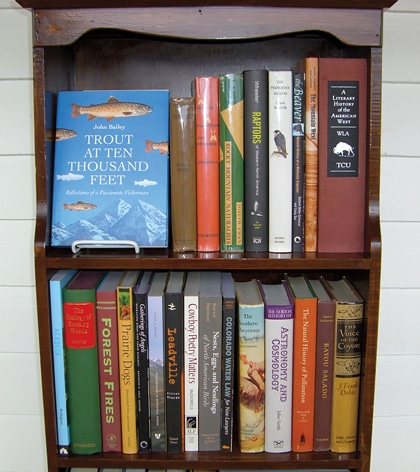
After a year of corresponding, the Director of Publishing for Kickstarter decided to fly to Denver to meet face to face with Lee to address his concerns about online fundraising. “I really wanted to show Jeff and Ann that I was a total believer.” It worked so well that Lee had her meet with Schultz, too. Atwell will always remember that meeting.
“I work with a lot of people who are doing exciting things, but the thing that stood out to me most about Jeff and Ann’s work was how they were so committed to it for decades. . . a single book at a time, a single story at a time, and how they are creating something that will be here long into the future.”
In 2017, RMLL’s Kickstarter campaign raised over $140,000, making it one of a few campaigns to exceed $100,000. The funds went to complete renovations on the Cook’s House, including two bedrooms, a kitchen, a large classroom space and of course, a library.
The campaign also bumped up RMLL’s visibility, again. Result? Hundreds of individuals, couples, families and groups keep on volunteering, often staying overnight, including the Boy Scouts, Colorado College students, City of Aurora, and HistoriCorps, which recruits and sends volunteers to work for week-long stretches on historic structures.
Volunteers have come from as far as the UK to put on work gloves, climb a ladder and pull ancient shingles off roofs, scrape off peeling paint, shovel and move dirt and manure, sort and recycle old tangled fence wire, paint buildings, install new windows, and just help clean up.
Their memories sound like journal entries:
It was June or July, the grass was green. The magic thing about the ranch, is the way the clouds start floating away and make shadows on the ridge and down the valley. Amazing view and landscape. It’s a great way to really connect and immerse. It’s become a big part of my family’s life. —Dan Carey, volunteer for four years
I decided to drive up the day before my first HistoriCorps project. I remember getting out of my car and someone had a fire going and someone had pancakes and coffee going. It was incredibly picturesque. Sunrise. People were getting ready for a day of work. I was on a team that re-painted the Cook’s House. I camped out and spent a week there. —Grace Hanover, Associate Director of Programming, National Western Center
It’s my dream project. The essence of the Land Library is your own story, it’s whatever you want to feel, it’s what you brought, it’s what you miss, it’s what you hope for, we’ll put some books there, some food there and the land is there. . . . when you put that together, it’s so cathartic and so inspirational for everybody. —Ted Schultz, volunteer architect with 2,000 hours
And, the words of those who long to visit RMLL:
I think there’s some kind of fairytale element going on with the Land Library. Anyone who hears the story can’t help but be charmed and pulled into it. The next step in the story for me is to get out there and see the land. —Margot Atwell
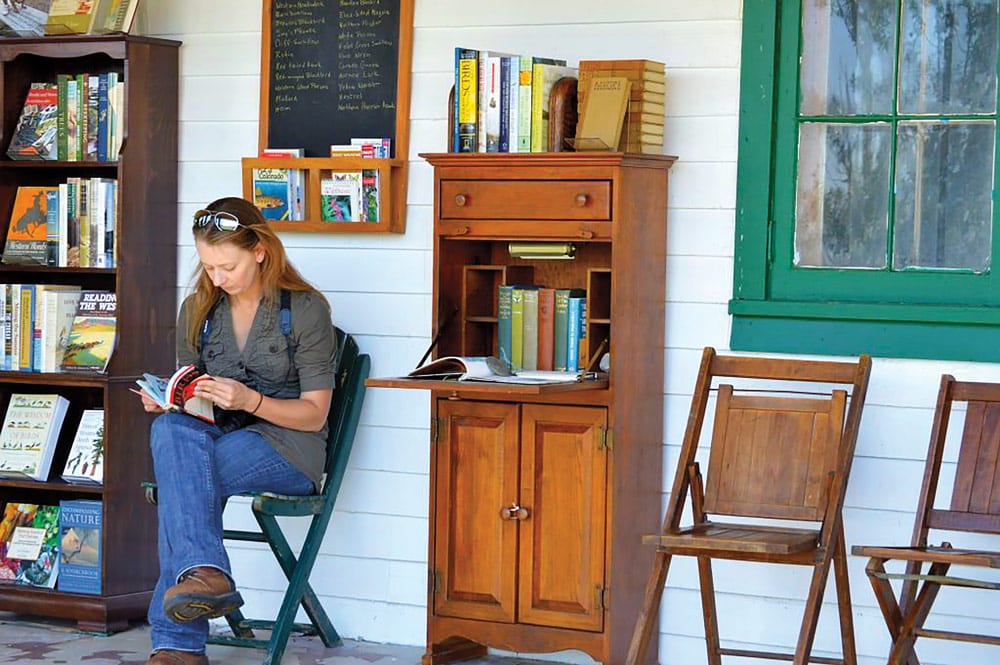
Welcoming Campers and Kids
Lee admits that juggling all the RMLL projects and day-to-day business gets overwhelming. After all, most of the buildings haven’t been used since 1995. But, the dawn of spring re-ignites Lee. It means summer programs and people coming to the ranch for a few hours or to immerse for a day or two in a workshop. Last summer marked the fifth summer of programs at RMLL. Topics are as vast as the sky that graces RMLL: geology of South Park, oil painting plein air (aka, painting on site), nature drawing, creative writing, song writing, knitting, haiku poetry, forest bathing (an ancient Japanese practice of an outdoor sensory experience). All workshops have the land in common, such as “Knitting the Landscape” and “Songlines—the Rhythm of the Ranch”, where students create songs and dance about the land.
For now, until there are actual beds, participants pitch a tent or stay at a nearby hotel or campground. But, starting summer 2021, they’ll be able to sleep in the horse barn in one of the platform tents designed by a group of Eagle Scouts.
This summer or fall, RMLL will officially open a lending library for South Park kids, families, schools, and youth groups. With a $7,000 grant from the now defunct Friends of Fairplay Community, the small Scale House at the ranch got a facelift and will be The Young Readers Library.
It’s proof that every single renovation takes mega patience, expertise, and time. Volunteers led by HistoriCorps’ Steve Harris turned the dilapidated dark metal building into a well-lit and airy building, including inserting windows and re-crafting the metal door into a Dutch door, and of course, making book shelves.
Lee is especially eager for kids to see the 1940s scale that he had professionally cleaned. “Kids and parents will get to see the original scale that was in it to measure livestock.” And, they’ll get to learn how the building was used as a supply depot in the ranch’s last years.
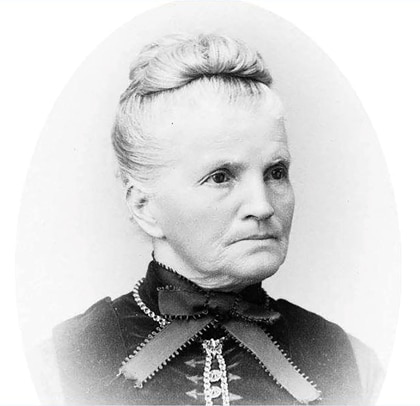
Adding to Her’story
Pioneer Marie Guiraud’s obituary described her Buffalo Peaks Ranch holdings as “very nearly as great, if not the equal, of the largest estate ever built up in Park County.” Four years later, the U.S. Department of Agriculture for the first time recognized the important role that women played on farms and ranches. And, Lee and Martin pride themselves on adding to her’story: In 2016, Buffalo Peaks Ranch was placed on the National Register of Historic Places. In 2019, RMLL received the Preservation Edge Award from Colorado Preservation, Inc. for utilizing unique and creative means to renovate.
In a Colorado Preservation, Inc. video, Lee eloquently looks ahead and talks about RMLL’s next chapter: “Sometimes, authors talk about a book starting to write itself. I think here the books are starting to write the library and starting to design it. It’s wonderful to realize that the books are starting to get out of our hands and the books themselves are taking over.”

